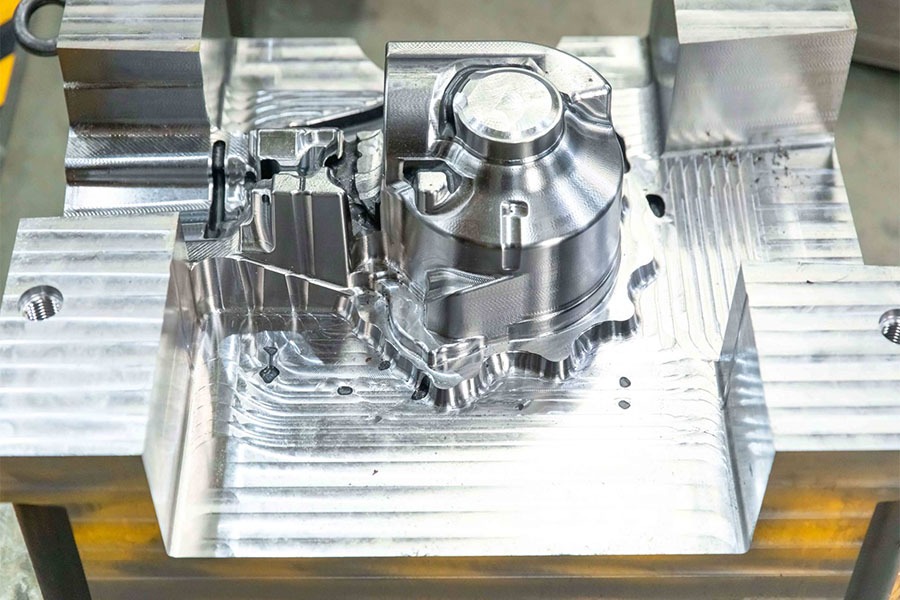Casting processes hold a pivotal role in manufacturing, serving as the key technology for transforming molten metal into solid components. Permanent mold casting and die casting, as two important casting methods, are widely used across various industrial sectors. In production, choosing the right casting process is critical for ensuring product quality, controlling costs, and improving efficiency. This article delves into when to use permanent mold casting versus die casting, guiding you to make the right choice based on your specific needs.

What is Permanent Mold Casting and Die Casting?
Permanent Mold Casting
Permanent mold casting uses molds made of durable materials such as cast iron or steel, which can be reused multiple times. The preheated mold is filled with molten metal, relying on gravity to fill the mold cavity. The metal solidifies as it cools, aided by the mold’s stable heat dissipation. This process results in castings with dense internal structures and uniform quality.
Applicable Material Types:
Common materials for permanent mold casting include aluminum alloys and copper alloys. Aluminum alloys, with their low density and high strength, are ideal for applications requiring lightweight yet durable components. Their good flow characteristics make them suitable for this process. Copper alloys, known for their excellent thermal conductivity and wear resistance, are used for parts requiring heat transfer and durability.
Product Characteristics and Size Limitations:
This method is well-suited for producing components with relatively simple geometries. It may face challenges in creating thin walls or highly intricate internal structures due to the slower flow of molten metal. Permanent mold casting is generally used for small to medium-sized parts, as larger parts can become cost-prohibitive or difficult to produce with consistent quality.
Production Batches and Cost-Effectiveness:
Permanent mold casting is cost-effective for medium production volumes. The mold’s durability ensures a lower overall cost per part for moderate batch sizes, making it ideal for applications with steady but not excessively high demand.

Die Casting
Die casting involves injecting molten metal into a reusable mold, or die, under high pressure. This rapid injection ensures the mold cavity is filled quickly and thoroughly, enabling the production of parts with intricate details and smooth surfaces. The high-pressure environment helps achieve precise dimensions and reduces porosity.
Applicable Material Types:
Typical materials for die casting include zinc alloys and magnesium alloys. Zinc alloys offer excellent fluidity and surface finishing properties, making them perfect for detailed and visually appealing parts. Magnesium alloys, prized for their lightweight and strength, are used in industries such as automotive and aerospace for weight-sensitive components.
Product Characteristics and Size Limitations:
Die casting excels at producing complex shapes with thin walls and fine details. It provides high dimensional accuracy and a smooth surface finish, often reducing the need for additional machining. However, die casting is less suitable for very large components due to equipment and pressure limitations.
Production Batches and Cost-Effectiveness:
Die casting is best for high-volume production due to its high initial tooling costs. Once the tooling is in place, the process offers exceptional efficiency, allowing for rapid production of large quantities with a low cost per unit.
Permanent mold casting and die casting have distinct principles, material compatibilities, and production strengths. Understanding these differences helps align the casting process with specific product requirements.

Decision-making Factors and When to Use
To determine whether permanent mold casting or die casting is the better choice, it is important to compare their performance across key factors. The table below summarizes their differences, followed by a conclusion to guide your decision.
| Factor | Permanent Mold Casting | Die Casting |
| Design Complexity | Best for simple to moderately complex geometries. | Ideal for intricate designs with tight tolerances and fine details. |
| Production Volume | Cost-effective for medium production volumes. | Highly efficient and economical for high-volume production. |
| Tooling Costs | Lower initial costs compared to die casting. | High initial costs due to complex tooling. |
| Material Compatibility | Suitable for aluminum and copper alloys. | Versatile, including zinc, magnesium, and aluminum alloys. |
| Part Size | Suitable for small to medium-sized parts. | Capable of producing intricate small to medium-sized parts; limited for very large parts. |
| Surface Quality | Moderate surface finish; may require additional finishing. | Excellent surface finish, often eliminating the need for post-processing. |
| Durability of Components | Produces dense and durable parts, especially for structural applications. | High strength but may have minor porosity depending on material and design. |
When to Choose Each?
Choose Permanent Mold Casting:
When the production volume is moderate, and the design is simple to moderately complex, this method is cost-effective and reliable. It is especially suitable for applications requiring durable components made from aluminum or copper alloys.
Choose Die Casting:
For large-scale production runs, intricate designs, or parts requiring excellent surface quality and dimensional accuracy, die casting is the ideal choice. Its high efficiency and material versatility make it a preferred method for many industries.
Permanent mold casting and die casting are indispensable techniques in modern manufacturing, each offering unique advantages. By understanding the principles and decision-making factors outlined in this article, manufacturers can confidently choose the best casting process to meet their project’s requirements. For optimal results, consider consulting with experts who can provide tailored guidance based on your specific application.










